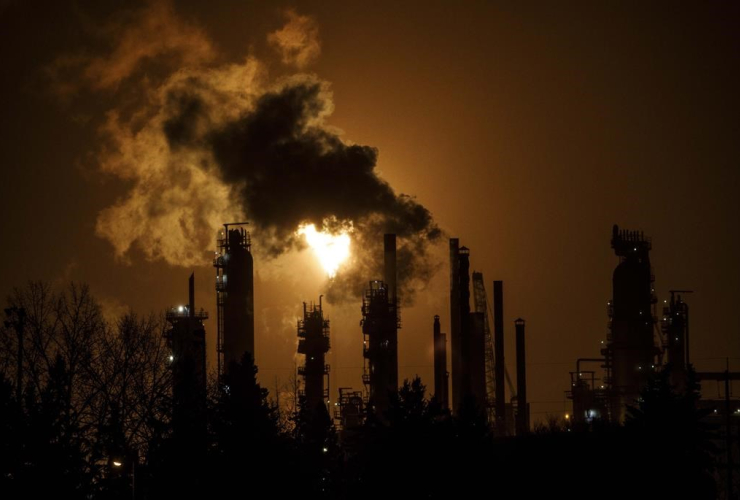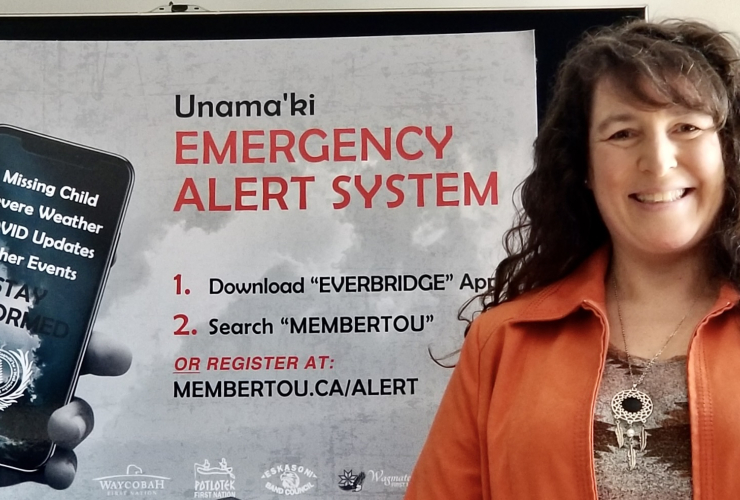Support journalism that lights the way through the climate crisis
A dozen nuclear energy experts are calling for a formal risk assessment of emerging nuclear technologies and warning Prime Minister Justin Trudeau if a company in New Brunswick were to be successful, its product could be used by other countries to make nuclear bombs.
The open letter sent to the Prime Minister’s Office is dated Sept. 22, and spells out concerns that Saint John-based nuclear startup Moltex is embarking on a risky path. The proposed Moltex reactor is planned to be built at the site of the Point Lepreau Nuclear Generating Station in Saint John, where it would essentially recycle spent nuclear waste sourced from CANDU reactors to produce more energy. The letter, signed by experts like former U.S. Nuclear Regulatory commissioner Peter Bradford, director of nuclear power safety with the Union of Concerned Scientists Edwin Lyman, George Washington University research professor and former State Department official Sharon Squassoni, says the risk is the plutonium in the used nuclear fuel could be separated and used to make weapons.
Despite Moltex claiming its technology is “proliferation-resistant,” the expert letter says there is “every reason to be skeptical of Moltex’s reactor technology.” The letter points to failed attempts in the United States and the United Kingdom to reprocess nuclear waste as a fuel, resulting in hundreds of billions worth of cleanup costs. To date, Moltex has received at least $50.5 million worth of federal government subsidies, $10 million from New Brunswick, and $1 million from Ontario Power Generation –– and is eyeing roughly $200 million more.
In an interview with Canada’s National Observer, Moltex CEO Rory O’Sullivan defended his company, calling the letter “biased” and misleading.
O’Sullivan says Moltex’s goal is to “destroy the hazardous weapons-grade material” that already exists in nuclear waste around the world. According to him, the technology takes spent fuel, puts it through a process called Waste to Stable Salt (or WATSS), and “the hazardous material [is put] into our reactor immediately, and then it’s destroyed.” What’s left is shorter-lasting, low-level radioactive materials, he said.
“I think that objective is ignored in this biased letter,” he said. Thousands of years into the future, nobody would be able to “use that material to make a bomb.”
For the experts who wrote the letter, inadvertently creating a product that could be used to make nuclear weapons is a very real concern, and one with precedent. As the letter to Trudeau details, Canada and the United States were both exporting nuclear reactor technology to India decades ago for power generation purposes and ended up increasing the risk of nuclear war.
“Some of the plutonium India produced and separated with that assistance was used in the plutonium-fuelled prototype bomb India tested in 1974, precipitating the South Asian nuclear arms race,” the letter reads.
Canada and its allies are concerned that as new nuclear technologies are developed, the technology could similarly lead to unexpected nuclear weapon development. In May at the annual G7 meeting, Canada committed “to prioritizing efforts to reduce the production and accumulation of weapons-usable nuclear material for civil purposes around the world.”
The letter requests a nuclear weapons proliferation risk assessment of the technology.
Natural Resources Canada did not return requests for comment by deadline. However, it did tell the Globe and Mail: “We can confirm that NRCan is not undertaking efforts to establish a policy on used nuclear fuel reprocessing.”
As the energy transition unfolds, nuclear energy is increasingly seen as a contentious fuel. While it is non-emitting, making it a potentially valuable tool in the race to decarbonize, nuclear waste is a long-lasting environmental concern with unclear storage options given it can be hazardous for thousands of years. Moreover, preventing the worst impacts of climate change requires slashing fossil fuel use by about half globally by the end of the decade, meaning experimental technology not yet suitable for use does not have any meaningful role to play in near-term emissions reductions.
In fact, a report by the U.S. National Academies of Sciences, Engineering and Medicine concluded small modular reactor designs like Moltex’s would struggle to be deployed by 2050, and require tremendous large-scale investment to succeed.
The only provinces that are
The only provinces that are considering nuclear reactors are governed by conservatives. The conservatives are against solar and wind power only because left leaning governments are for them. The issue of nuclear waste is a huge problem and always will be. Say no to nuclear .
That is why left leaning
That is why left leaning provinces have energy crisis worse than nuclear energy utilized provinces.
Hmpff. That'd be the same
Hmpff. That'd be the same "spent fuel" we've been told "isn't harmful," and we've been told must be buried, because it can't be separated into component bits.
So someone's lying somewhere: either now, or earlier.
I'd think the more dangerous bit would be "small" reactors being blown up by conventional weapons ...
And this whole piece makes me wonder about the "spent fuel" being used in warheads, which we've been told don't leave dangerous residue -- although the cancer stats in Iraq, where depleted uranium warheads were used extensively, would indicate otherwise. Those warheads aren't considered to be "nuclear weapons" ... and so aren't included in non-proliferation treaties.
But only a couple of countries in the world use them. The US is offloading their current supply on Ukraine.
Radioactive bread, anyone?
I would like to learn why
I would like to learn why these projects aren't using thorium. I have no expertise and know little about the topic but I'd understood that thorium reactors didn't produce waste that could be used as weapons and was less dangerous. Why isn't that a priority?
Thorium reactors are one of
Thorium reactors are one of those things like fusion power--there's a bunch of boosters around that make amazing claims but as I understand it nobody has actually been able to build one that works in a practical way, like keeps on working, generates electricity you can use, all the stuff you need for going from "interesting experiment" to "commercially viable".
(In this, it's actually not really different from Small Modular Reactors)
Personally, I'm fine with continuing research into fusion power, but I think fission is in general a bad, dead end technology so I'm not really big on spending a bunch of money looking into less-bad variations. When there are now GOOD technologies available I don't really get why money should be spent coming up with a better way to turn a nuclear bomb into a steam engine.
We’ve been using Nuclear
We’ve been using Nuclear Energy and creating nuclear waste since the 1950’s and we still haven’t committed to a “final” storage solution.
Current Canadian reactors produce 90,000 used fuel bundles per year.
As of June 2022 Canada has 3.2 million used fuel bundles in temporary storage. If these were stacked like wood they would cover the surfaces of 9 hockey rinks from the ice to the top of the boards (~ 16,200 cubic meters).
Our current storage method, referred to as temporary storage, is in water filled holding tanks and later dry tanks.
Used Uranium bundles will require approximately 1 million years to decay to their natural equivalent of Uranium radioactivity.
Moltex plans to use residual energy from the “spent” bundles. New technology is emerging while we haven’t resolved how to handle the effluent of the first.
The likely “solution” is deep geological repositories (mines).
The risk of theft of the spent fuel bundles has always existed but may increase if we ever start moving these bundles to a repository or a new reactor.
Data source:
https://www.nwmo.ca/-/media/Site/Files/PDFs/2023/03/30/18/45/Backgrounde...
Given that the world's
Given that the world's nuclear-armed states now possess a combined total of about 12,512 nuclear warheads, I'd say Moltex's plans are the least of our worries.
I'd have to agree that it's a
I'd have to agree that it's a minor concern compared to all the more basic problems with SMRs, like they're ridiculously expensive, many designs use untested technology that may well not work worth a damn, the waste, and building them will be way too slow to be useful to fight climate change. And, again, they're ridiculously expensive.
And they will stay that way, because to start bringing prices down you would need a ridiculous number of orders for identical reactors, but since they can't compete with solar or wind or probably even geothermal, and by the time you manage to build the first few the whole power landscape will have changed and left them behind, there never will be that many orders.
SMRs are a stupid distraction, which are actually being backed by fossil fuel companies precisely because they know they won't work for shit, but they're hoping governments will divert some of their policy attention and money from technologies that will actually displace fossil fuels to these boondoggles that will not. The threat here is not that they will ever catch on and create tons of nuclear waste--they will not. The threat is that governments will slow the energy transition for a few years by neglecting the real things they should be doing in favour of pouring money into these pits.
And of course, a good deal of
And of course, a good deal of the government money in question will find its way into the pockets of executives at these companies, who will walk away with a lot of loot before the whole thing falls apart. They don't care if it works, they just want to shake the money tree as hard as possible for a few years.
I'm late in commenting but I
I'm late in commenting but I read this when it was published. Excellent article, thank you.






Comments